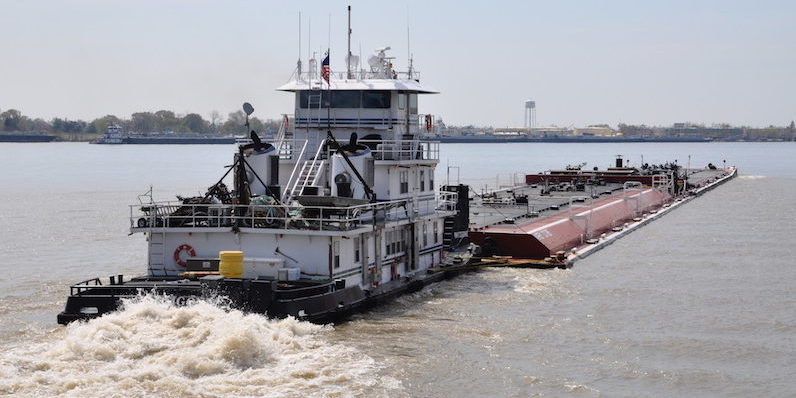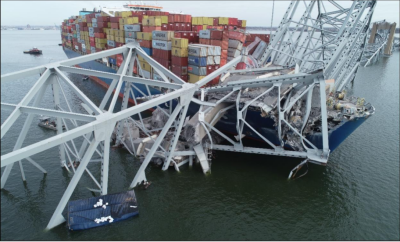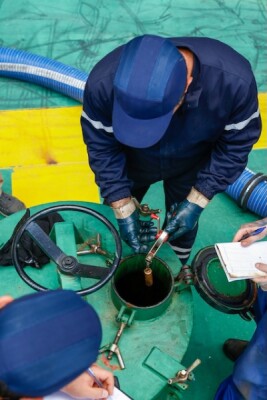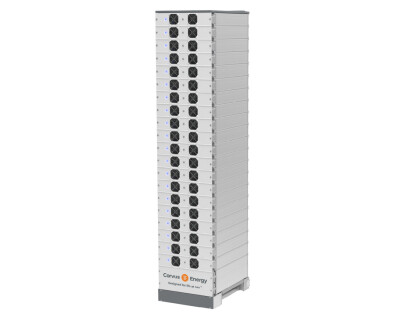Two “black swans” swimming in the same pond. That’s what happened when the enormous oil oversupply, in the wake of oil producers’ failures to agree on cuts, began sloshing around at the same time that the economic impact from the coronavirus hit the U.S. hard.
The ensuing waves have swamped all businesses including maritime transportation and services. But the outlook may not be all bad. Tank barge operator Kirby Corp., in its first-quarter earnings released earlier this month, not surprisingly posted earnings of 59 cents a share, down from the year ago figure of 74 cents a share. Beyond the headline number (which excludes a massive one-time write-off in the oilfield services side of the business), Kirby’s inland segment actually posted improved results. The company said that in the inland market, average barge utilization was in the low to mid-90% range during the quarter. Coastwise, things were not so bad. Compared to the 2019 first quarter, spot market and term contract pricing was approximately 10% to 15% higher.
When the conversation turns to the fortunes of crude oil tanker owners, the conversations are often perverse. Oil pricing economics, reflecting nearby oversupply and unprecedented reduced demand, led to a situation where traders bought crude oil for storage, which spilled over to create a burst of term charters of deep-draft tankers.
In the frenzy, trade media were reporting that traders had taken Jones Act tonnage for storage, a highly unusual move. Yet, while retail investors chased some of the big deep-sea tanker names downward (having missed the boat), the big guys (selling their crude tanker shares), already looking around at signs of a recovery, had shifted their focus.
The emphasis is moving towards the product side of the business. Jefferies & Co. energy analyst Randy Giveans explained in an early May report that “the refined products tanker market should benefit from increasing geographical arbitrage trading for refined products and slowing fleet growth.”
Analysts at Evercore ISI noted that “rare floating storage trends have emerged for refined products, taking that tighter market (versus crude) to the stratosphere as spot rates — deep-sea product tankers — doubled previous record highs.” Though acknowledging that taking vessels for product storage will also ebb, Evercore ISI analysts did point to increased flows of oil products. “This demand-driven inflection point is likely to also be accompanied by some boost to refinery utilization as well as regional dislocations of end-products to where they will ultimately be consumed.”
This could also apply to chemical trades for both oceangoing tankers and for movements around U.S. waterways. Analyst Paola Rodriguez-Masiu of consultants Rystad Energy, on a call hosted by broker BTIG, talked about an “increase in traffic.” While Rystad’s Per Magnus Nysveen said, “one thing is clear, the demand bottom is behind us, and this is manifesting in oil prices which are on the rise.”
Kirby is actually very well insulated. Again, the proverbial glass tilts towards half full. In their first quarter results, they note that “in inland marine, as a result of the mounting headwinds associated with Covid-19 and reduced consumer demand for petrochemicals, crude oil and refined products, activity and barge utilization levels have declined to levels around 90% in recent weeks.
“With refineries and petrochemical plants reducing utilization rates to align with declining demand, Kirby expects low volume levels to persist until economic activity resumes. However, the long-term nature of many of our inland term contracts and the flexibility of barging in the evolving and complex U.S. supply chain will help to insulate some of the decline in business activity. Opportunities for storage, product relocations, and upcoming lock maintenance projects will also help to mitigate lower demand.”





